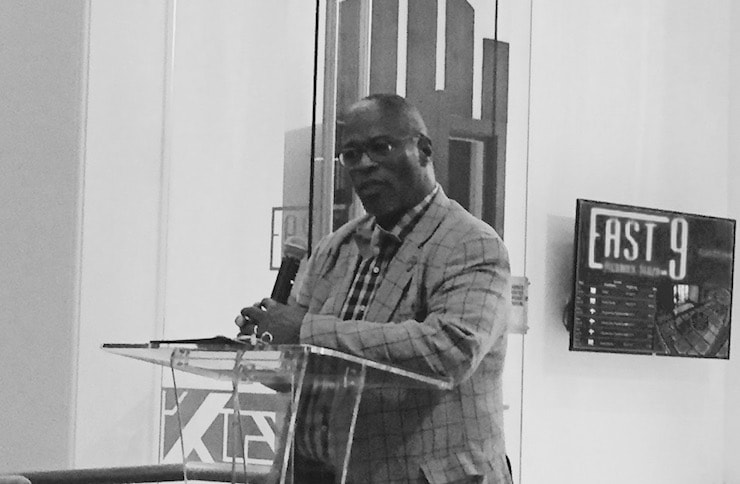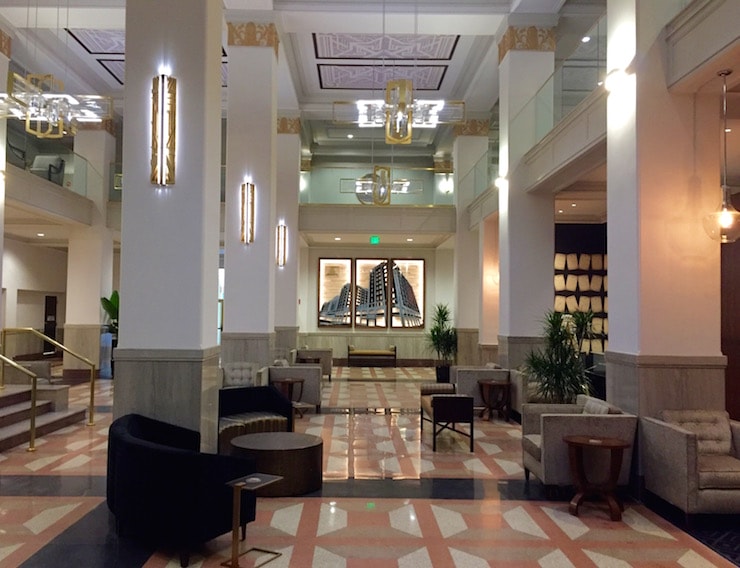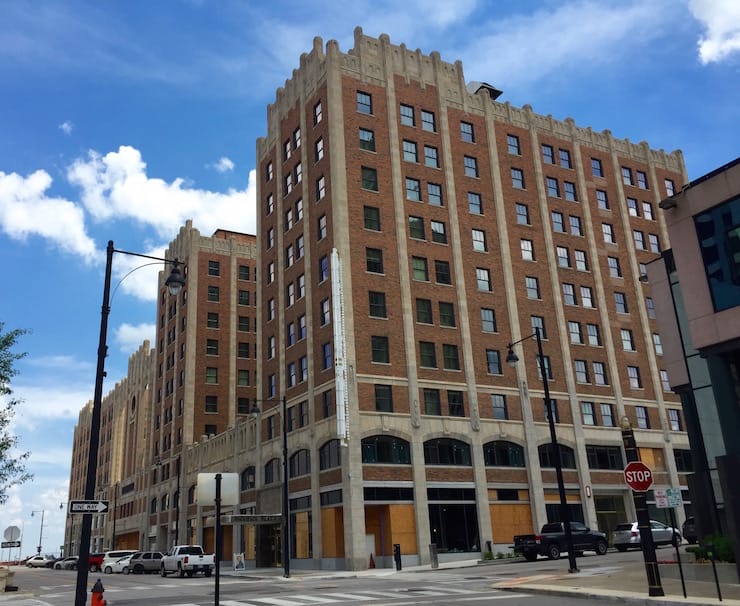Mayor James Defends Missouri Historic Tax Credit Program, Says Jeff City: “Doesn’t Like Cities”

Published July 26th, 2017 at 12:30 PM
Mayor Sly James used the grand opening of the East 9 at Pickwick Plaza redevelopment last week to champion the endangered state historic tax credit program that helped finance the $65 million apartment project.
“This wouldn’t have been possible without the historic tax credit program,” the mayor said. “Let’s not say we’ll let our buildings fall into oblivion and blight.
“If the state won’t help us, we’ll find another way to help ourselves.”
The mayor was responding to the recent recommendations of a task force established by Gov. Eric Greitens that preservationists and developers say would devastate the historic tax credit program.
The program enacted in 1998 provides state tax credits for 25 percent of the eligible cost of renovating buildings certified as historic by federal and state officials. Those credits then can be sold or transferred by developers to raise cash to help finance projects.
When combined with a similar federal historic tax credit program that provides a 20 percent credit, the tools have been used to renovate dozens of historic buildings, making it a major force in the revitalization of downtown Kansas City in recent years.

The two-level lobby of the historic Pickwick complex is among its amenities.
The task force is recommending the historic tax credit program be lumped together with the brownfield tax credit program and both capped at $50 million annually. The current yearly cap on the historic tax credit program is $140 million, and the brownfield program generally runs $6- to $10 million annually.
The task force also is recommending a $2 million historic tax credit cap for each project. Developers say that cap would prevent the program from being helpful to larger projects like the Pickwick.
The mayor and other speakers at the Pickwick event noted the governor’s task force skipped Kansas City and St. Louis, two cities where the historic tax credit program has been used extensively, and held its hearings in small towns instead.
“If they went to rural areas, they got the response they wanted,” James said.
Greitens also recently vetoed state matching funding for the proposed $96 million UMKC Downtown Conservatory, a project that backers believe would be a huge boon to downtown as well as provide much-needed new facilities for the university’s music and dance program.
In his veto message, the governor said the conservatory was for “dancers and art students.” The state funding plan did win overwhelming majorities in both the Missouri House and Senate.
“We need to get over the idea the state is going to save us,” James said. “It’s not going to happen. the city needs to take care of itself…the legislature doesn’t like cities.”

Historic Pickwick complex opened in 1930 and included a hotel, bus terminal and office building.
The mayor said that when he was a member of the Land Clearance for Redevelopment Authority, a city economic development agency, the mostly-vacant Pickwick complex was a “pit.”
“I’m proud of the work that’s been done here and the people who come together to do it,” he said.
Bill Dietrich, president of the Downtown Council of Kansas City, described the Pickwick project as an “amazing tribute” to the city’s history. He said the historic tax credit program is under assault in Jefferson City.
“Please join us in protecting this incredibly valuable resource,” Dietrich said.
The Pickwick complex, a former office building, interstate bus terminal and hotel that opened in 1930, is the latest historic building to find new life as apartments and/or hotel space in downtown Kansas City.
The redevelopment of old, obsolete office buildings has not only contributed to the downtown residential boom, but also helped reduce the office vacancy rate to the point that new projects are being envisioned, including last week’s announcement the historic Kansas City Star building is slated to be redeveloped as an office campus.

A saltwater pool now occupies the space of the former bus ramp at the Pickwick Plaza.


